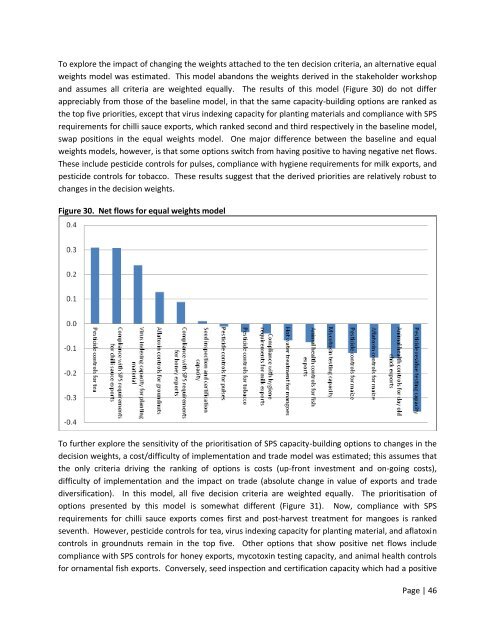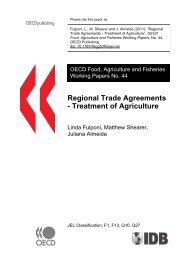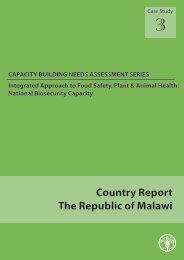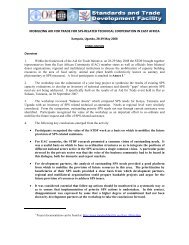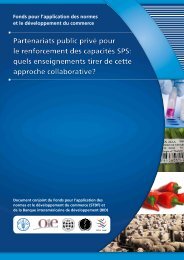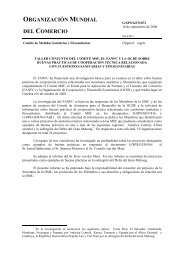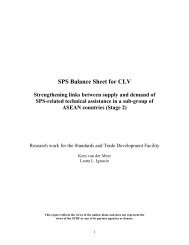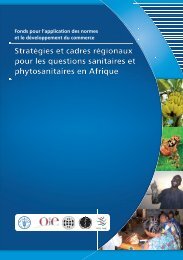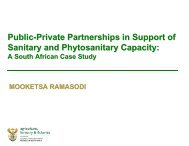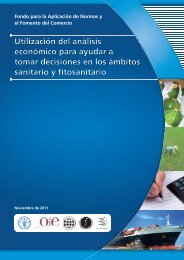MCDA Final Report Malawi - Standards and Trade Development ...
MCDA Final Report Malawi - Standards and Trade Development ...
MCDA Final Report Malawi - Standards and Trade Development ...
You also want an ePaper? Increase the reach of your titles
YUMPU automatically turns print PDFs into web optimized ePapers that Google loves.
To explore the impact of changing the weights attached to the ten decision criteria, an alternative equal<br />
weights model was estimated. This model ab<strong>and</strong>ons the weights derived in the stakeholder workshop<br />
<strong>and</strong> assumes all criteria are weighted equally. The results of this model (Figure 30) do not differ<br />
appreciably from those of the baseline model, in that the same capacity-building options are ranked as<br />
the top five priorities, except that virus indexing capacity for planting materials <strong>and</strong> compliance with SPS<br />
requirements for chilli sauce exports, which ranked second <strong>and</strong> third respectively in the baseline model,<br />
swap positions in the equal weights model. One major difference between the baseline <strong>and</strong> equal<br />
weights models, however, is that some options switch from having positive to having negative net flows.<br />
These include pesticide controls for pulses, compliance with hygiene requirements for milk exports, <strong>and</strong><br />
pesticide controls for tobacco. These results suggest that the derived priorities are relatively robust to<br />
changes in the decision weights.<br />
Figure 30. Net flows for equal weights model<br />
To further explore the sensitivity of the prioritisation of SPS capacity-building options to changes in the<br />
decision weights, a cost/difficulty of implementation <strong>and</strong> trade model was estimated; this assumes that<br />
the only criteria driving the ranking of options is costs (up-front investment <strong>and</strong> on-going costs),<br />
difficulty of implementation <strong>and</strong> the impact on trade (absolute change in value of exports <strong>and</strong> trade<br />
diversification). In this model, all five decision criteria are weighted equally. The prioritisation of<br />
options presented by this model is somewhat different (Figure 31). Now, compliance with SPS<br />
requirements for chilli sauce exports comes first <strong>and</strong> post-harvest treatment for mangoes is ranked<br />
seventh. However, pesticide controls for tea, virus indexing capacity for planting material, <strong>and</strong> aflatoxin<br />
controls in groundnuts remain in the top five. Other options that show positive net flows include<br />
compliance with SPS controls for honey exports, mycotoxin testing capacity, <strong>and</strong> animal health controls<br />
for ornamental fish exports. Conversely, seed inspection <strong>and</strong> certification capacity which had a positive<br />
Page | 46


